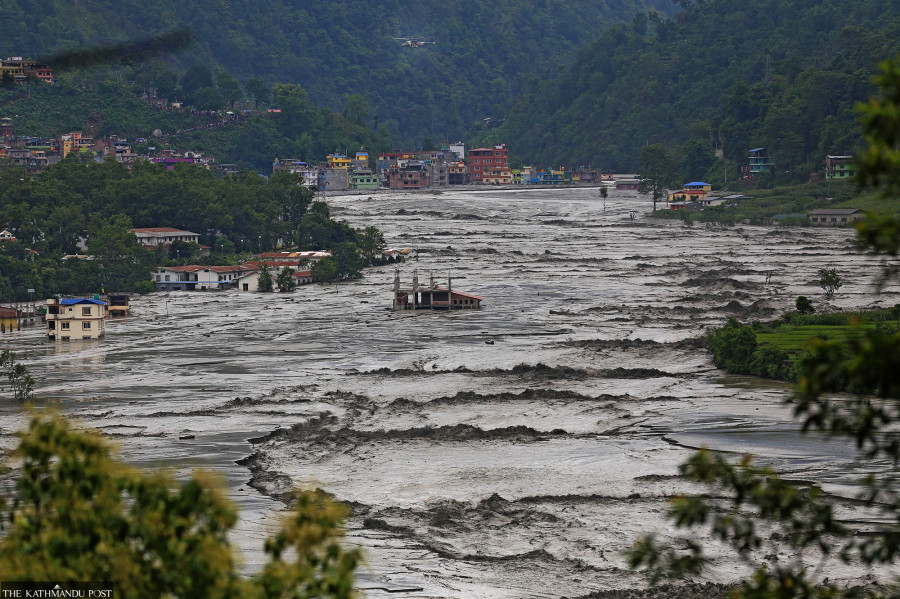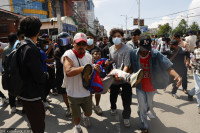Editorial
Decade of disasters
Our challenges have grown due to climate change, geological conditions and misguided policies.
Wildfire, landslide and landslide dams, extreme heat and urban flood, water scarcity, earthquake, river flood, cloudburst or short-duration intense rainfall and hurricane—extreme natural hazards in Nepal have become more frequent with increasingly severe repercussions in the past decade. Scientists, researchers and environmental activists keep reminding us that Nepal is one of the most disaster-prone countries globally. Our challenges have only grown due to climate change, geological conditions and misguided policies. Despite the concerns and constitution guaranteed provisions and tons of academic research and policy and institutional arrangements at all tiers of government, disaster risk management in Nepal is primarily focused on rescue and rehabilitation rather than risk reduction and mitigation.
Nepal is ranked fourth in terms of vulnerability to climate change impacts. More than 80 percent of the population is reported to be at risk of some kind of natural disaster; but like in the pandemic, we are failing to prevent untoward situations when it comes to disaster governance. As a result, multiple hazards batter the country every year; and they’ve intensified, causing loss of lives, property, livestock and mega infrastructure amounting to millions of rupees. Despite a decade of disasters that have killed and injured people, triggered a humanitarian crisis and incurred billions in damage and losses, there is no comprehensive strategy to mitigate our risks or the political will to implement science-guided measures. Instead, the administration contradicts commitments while turning mute to all the warnings on the wall.
That the dangers for Nepal will grow as the effects of climate change are more pronounced has been communicated for decades. Recent projections, studies and the extreme events have only validated those warnings with accuracy and a deeper understanding of how changing weather patterns exacerbate disasters, affecting millions of people beyond borders. Last year, a NASA study projected that there would be a 30 to 70 percent increase in the frequency of landslides in the border regions of China and Nepal that would pose threats to the region’s infrastructure and communities living in the river basins. Another study by the Department of Hydrology and Meteorology also forecasts a warmer and wetter climate in the future. The study estimates that the average annual mean temperature and average annual rainfall will continually surge until the end of the century. Precipitation may increase by 11-23 percent, whereas the temperature will go up by 1.72-3.58 degrees Celsius in the period, the researchers say.
A government study has also concluded that extreme rainfall has significantly increased in the north-western and north-eastern districts, and that short-duration intense rainfall is unleashing more floods and landslides. We are facing the two great crises of our times—Covid-19 and the climate crisis. If we need any reminder, the primary causes of the climate crisis also increase the risk of a pandemic. These are reasons enough to declare a climate emergency and pursue legal and policy frameworks to bolster our environment and disaster management. If we do not act now as our situation demands, the repercussions will be catastrophic as the events in the past two days with the advent of the monsoon have shown, leaving us with a trail of natural, emotional and economic scars. We are already getting late in embracing science-guided policies and actions to mitigate the risks from hazards, and prevent the country from this vicious cycle of disasters that pose an imminent threat.




 7.12°C Kathmandu
7.12°C Kathmandu














